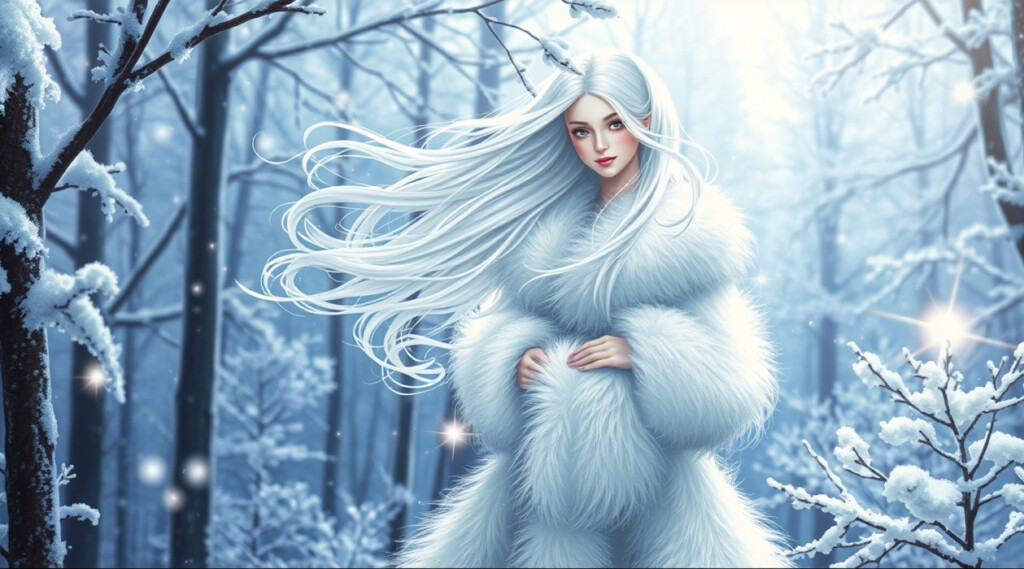Russian winter is not just about snow-covered birch forests or silent frozen rivers. It is also home to legends that leave people both enchanted and wistful. And if winter had a muse, it would undoubtedly be Snegurochka – the Snow Maiden.

Born from snow, as beautiful as a frozen dream, yet cursed with one tiny problem—she cannot love. The moment she feels warmth in her heart, she vanishes. Her story is a contrast between the icy cold of winter and the warmth of love, between fleeting beauty and a tragic fate.
But is Snegurochka destined to remain a sorrowful figure forever? Or has she made a spectacular comeback, becoming an irreplaceable part of Russia’s New Year celebrations?
Fiery Love and the Tragedy of a Girl Who Couldn’t Handle Heat
According to Slavic folklore, Snegurochka first appeared in 19th-century Russian fairy tales, particularly in the works of Alexander Afanasyev, one of Russia’s greatest folklore collectors (Afanasyev, A. “Russian Fairy Tales”, 1855). She is the daughter of Moroz (Father Frost) and Vesna (Goddess of Spring)—a paradoxical union of harsh winter and the warm breath of spring.
But, as we all know, the more something is forbidden, the more irresistible it becomes. One day, Snegurochka encounters a young man, and her frozen heart begins to… melt. And, as expected, the moment she experiences love, she disappears.
In a way, Snegurochka is the ultimate symbol of beautiful but painful love—the kind you can admire from afar but never truly have. Like crushing on someone who you know will never be yours.
Snegurochka – A Fleeting Beauty That Never Goes Out of Style
Snegurochka is not just a tragic figure; she is the embodiment of delicate beauty—a mesmerizing vision that cannot last, much like the ethereal essence of Russian winter itself. She is like a snowflake in your palm: dazzling and perfect, but gone the moment warmth touches it.
However, her image changed drastically during the Soviet era. From the 1930s, the Soviet government transformed Ded Moroz and Snegurochka into secular symbols, making them the faces of New Year’s celebrations (Novy God) instead of Christmas (Forbes, B. D. “Russia’s New Year: Ded Moroz and Snegurochka”, 2001).
Perhaps Snegurochka herself thought: “Love is too complicated—being a Christmas idol is way more fun!” 🎄❄️
Snegurochka vs. Yuki-onna & Skadi – What Makes Her Unique?
Across cultures, winter has its own legendary figures. For example:
- Yuki-onna (Snow Woman) from Japan is a ghostly spirit appearing in Edo-period folklore, documented in Kwaidan by Lafcadio Hearn (1904).
- Skadi, the Norse goddess of hunting and winter, is mentioned in Prose Edda by Snorri Sturluson (13th century).
So, how does Snegurochka compare to these other legendary winter women?
- Yuki-onna: Colder than your crush leaving you on read. She appears in blizzards, lures victims in, and freezes them to death. In contrast, Snegurochka is innocent and kind—she doesn’t harm anyone, she just disappears when she falls in love.
- Skadi: The fierce and independent Norse goddess of winter and hunting. If Snegurochka is a delicate snowflake, Skadi is a raging snowstorm. One is gentle, the other is a force of nature.
In short:
- Snegurochka makes you want to protect her.
- Yuki-onna makes you want to run for your life.
- Skadi… well, just don’t mess with her unless you want to get smacked by an ice axe.
A Lesson From the Snow Maiden: Don’t Let Your Crush Make You Melt
No matter which version of her story you hear, Snegurochka remains a winter icon, reminding us that some things are breathtakingly beautiful but impossible to hold onto forever.
But more importantly, she has been reborn in modern culture—not as a sorrowful maiden, but as a beloved figure in New Year’s celebrations.
She evolved from a tragic figure to a bringer of joy. She transcended her fragile nature to become a lasting symbol. And above all, she serves as a reminder of an age-old lesson:
✨ Don’t fall for the wrong person, or you’ll melt like ice under the sun! ❄️😂
